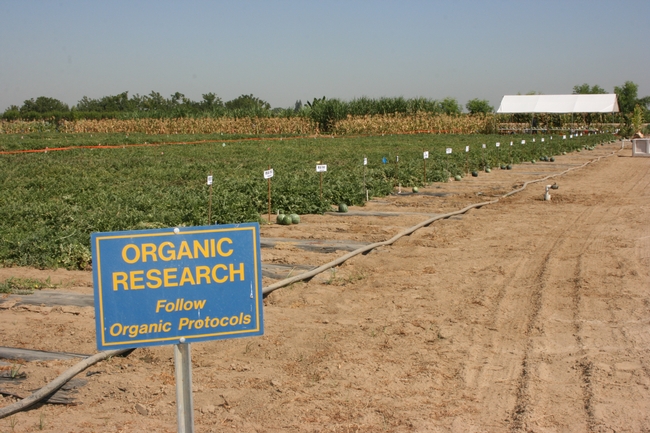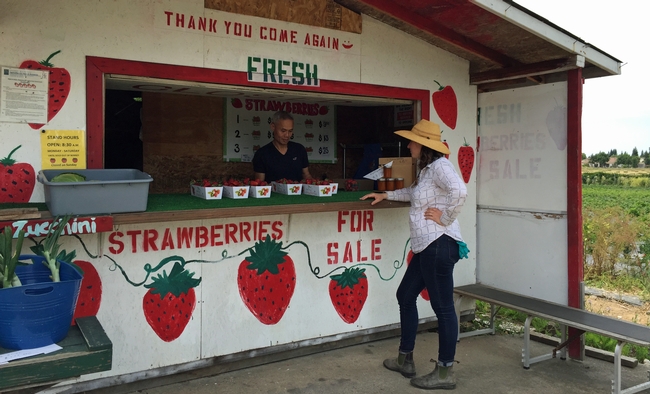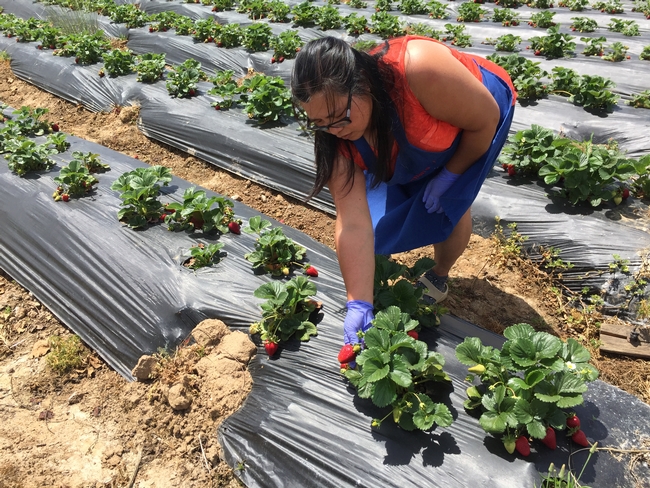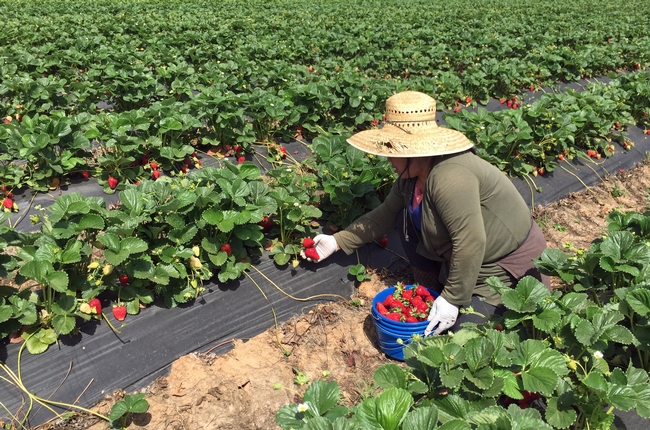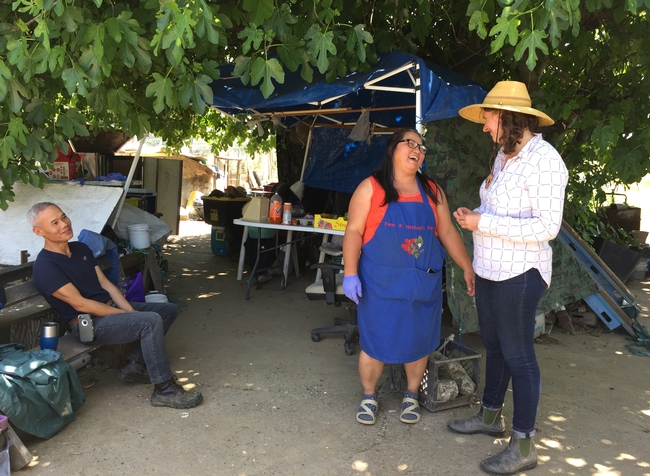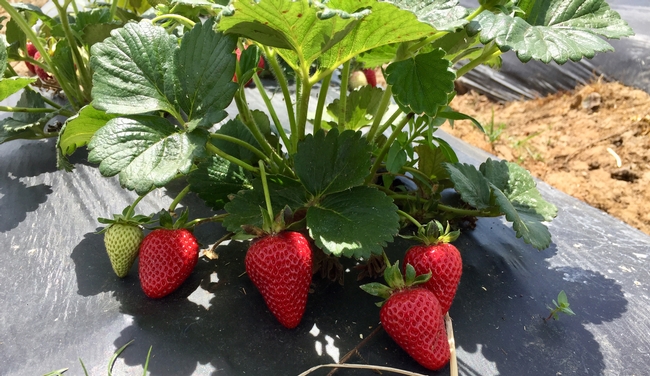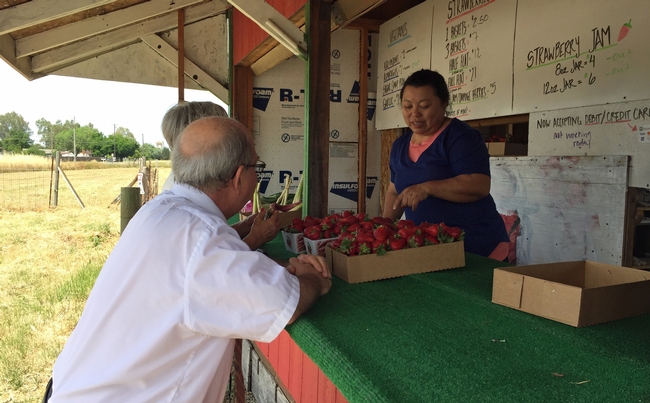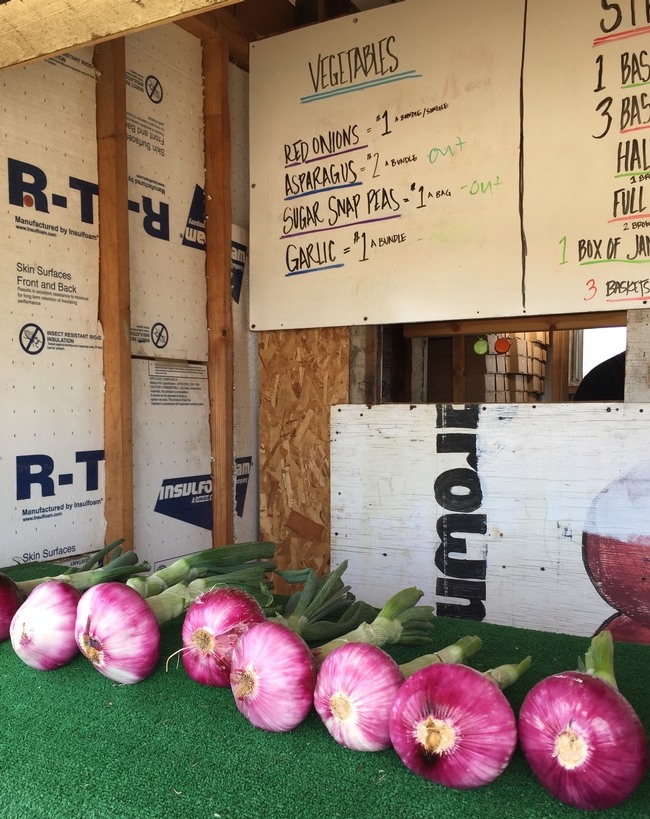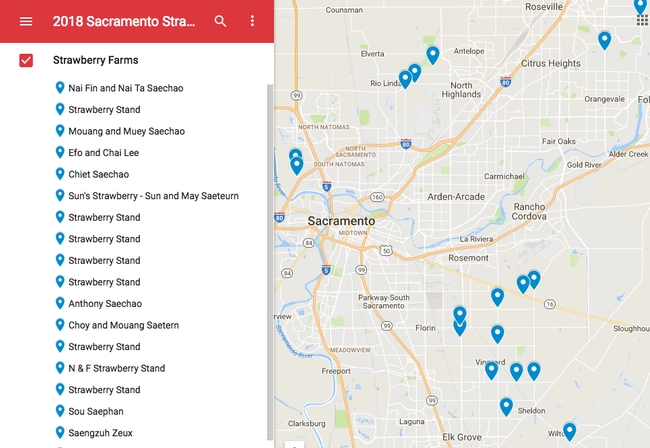Posts Tagged: Margaret Lloyd
Free weekly organic agriculture seminars for growers
Growers are invited to attend free organic agriculture seminars hosted by UC Cooperative Extension. Lunchtime seminars will be offered on Tuesdays from 12 to 1 p.m. through March 8.
The 30-minute presentations will be delivered online via Zoom, followed by questions from the listeners and general discussion. The exception is a three-hour workshop on management of Fusarium wilt and other soilborne fungal pathogens in organic systems, from 8:45 a.m. to 12:30 p.m. on Feb. 15.
Water management, weed control, grafting heirloom tomatoes, organic nitrogen management, soilborne diseases, biostimulants, biocontrol agents and mycorrhizal fungi will be discussed by UC Agriculture and Natural Resources scientists and guest speakers.
For the full schedule of presentations and speakers, visit https://bit.ly/organicagseminars. Spanish speakers can see the agenda en Español.
The Zoom link (https://ucanr.zoom.us/j/97511217168?pwd=ZWVhVXorcFEzRHUwQ0Q0L1lqaHNWdz09) for the series will be the same each week. No pre-registration is required.
The presentations will be recorded and made available at https://bit.ly/organicagseminars.
Strawberry stands sell berries fresh from the field
Slugs, snails, ants, aphids, spider mites and inclement weather conspire against strawberry growers harvesting perfect red berries to sell.
“Farming is hard work,” said Fam Lee, as she pulled a weed from a row of strawberry plants. Lee and her husband Nathan Punh are among about 60 Mien farmers in the Sacramento area who call on Margaret Lloyd, a UC Cooperative Extension advisor, for farming advice.
“Although we are not organic farmers, we always want to go with organic,” said Lee. “For example, we have slugs and ants, I asked Margaret if it's okay to put organic slug bait around the plant as long as it doesn't touch the berry. She said that's the best way to do. We work closely with our extension staff.”
In the Sacramento area, many of the Mien-owned farms are husband and wife teams. The typical couple farms an acre or two themselves, picking berries to sell the same day at a roadside stand, which provides the family's primary source of income.
“Many of them grew up on farms in Thailand or Laos growing vegetables or growing rice or soybeans,” said Lloyd, who serves small-scale farmers in Sacramento, Solano and Yolo counties. “A lot of them come from farming backgrounds so when they came to this country, they also sought out an agrarian lifestyle.”
Some Mien growers had never seen a strawberry before arriving in California, but chose the high-value crop to maximize returns on their small plots of land.
To help Mien growers develop successful strawberry farms, Lloyd updates them on regulations and shares growing tips at an annual extension meeting, visits them at their farms, and records videos demonstrating how to do things such as using compost to fertilize the crop.
“Because of language barriers, coming out to the farm regularly is a big part of the job,” said Lloyd, who partners with staff from the National Center for Appropriate Technology (NCAT) to assist Mien farmers.
“Once we're on the farm, we can communicate in-person more easily,” she said. “Often times it involves pest identification, so I'll show them how to use a hand lens and how to identify spider mites, aphids and lygus bugs, for example.”
“A lot of them have children who speak English fluently so if they don't speak English fluently, sometimes the children come out and help.”
For the past five years, Lee and Punh have been growing and selling strawberries at a farm stand on Bond Road, between Bader and Bradshaw, in Sacramento. They grow Albion, Chandler, Santa Rosa and Seascape – sweet, delicate varieties, some of which aren't found in supermarkets because the berries don't store and ship as well. They typically begin harvesting berries at the end of March and pick through July or August, depending on the weather. This year, the first berries were ruined by spring rain and frost.
Savvy consumers will ask for certain varieties by name, Lloyd said. “Chandler is well-loved by consumers for its delicate flesh and sweet flavor. Albion produces larger berries that are also very tasty.”
Because berries sold at the roadside stands are picked fresh daily, the farmers wait until berries are perfectly ripe before picking them.
Monday through Saturday, Lee begins harvesting her strawberries by hand at the break of dawn.
“We start at 5:45, the minute we can see, and we pick until 8 o'clock. That's our goal,” Lee said. “By 8:30, we want to open our stand and we sell until all the berries run out.”
Lee's parents often drive up from Alameda to help pick berries.
To extend the farm stand season, some Mien farmers supplement the strawberries with other berries, strawberry jam and vegetables. They grow blueberries and blackberries, tomatoes, peppers and green beans and sometimes specialty vegetables such as bittermelon.
“Growing strawberries isn't easy, but it's enjoyable work,” Lee said.
Lloyd has updated a map showing locations of about 60 strawberry stands in the Sacramento area at http://bit.ly/strawberrystands.
Heirloom tomatoes are a delicious treat and provide a market niche for small growers
In recent years, heirloom tomatoes have become a farm-to-table favorite.
Some consumers are willing to pay a hefty price at trendy restaurants, farmers markets, roadside stands, and even local grocery stores for tomatoes with irregular shapes, vivid colors and rich tomato flavor.
The consumer demand presents an opportunity for small-scale farmers, and a challenge.
“It's not easy to grow heirloom varieties,” said Margaret Lloyd, the UC Cooperative Extension small-scale farm advisor for Yolo, Solano and Sacramento counties. “They often have less disease resistance, are lower yielding and cannot tolerate as much stress as improved modern varieties.”
When Lloyd joined UCCE last summer, she began visiting small-scale producers in the counties she serves.
“I realized very quickly how important fresh market tomatoes are to these growers,” Lloyd said.
Because she holds a doctorate degree in plant pathology from UC Davis, Lloyd is well-positioned to begin her research program with a small tomato grafting project on UC Davis farmland. Her idea is grafting the particularly delicious heirloom varieties onto tomato roots that are resistant to soil-borne diseases.
“Grafting is an old technology,” Lloyd said. “It works in the same way we graft fruit trees and grapevines onto favorable rootstocks. Vegetable grafting has also been done for years.”
Lloyd said the process is simple and an individual can easily learn to graft tomatoes. But to do so cost effectively with the quality and success rate necessary for economically viable production, it may make most sense to work with a commercial nursery.
Lloyd is conducting a quarter-acre field trial with the three most common heirloom varieties – Brandywine, Cherokee purple and Marvel stripe – plus the yellow-hued Sun Gold cherry tomato and a non-heirloom salad tomato, Charger. Several growers in the area have also planted them in their commercial operations.
In addition to collecting data from the trial that will help small farmers decide whether grafted tomatoes make sense for their operations, Lloyd and her research associates will harvest many bushels of fresh tomatoes from the plots. Some will be sold at the UC Davis farm store to help support the research, and as for the rest, “We're definitely going to eat them,” Lloyd said.
“I enjoy them raw with olive oil, salt, vinegar and a little basil,” she said.


